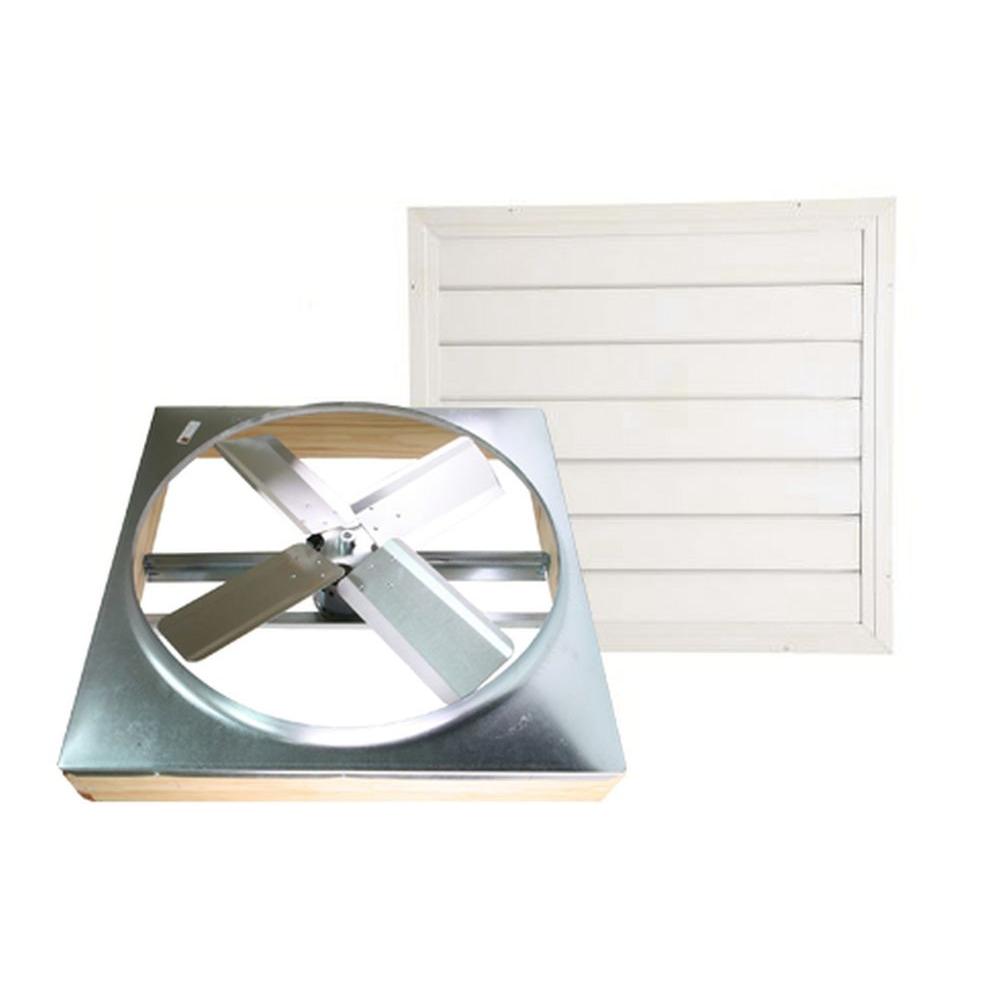Table Of Content

You can do a joist-in or joist-out installation with this Cool Attic fan. Whole house fans are a great option to keep your house cool but without the costs of traditional A/C systems. Whole-house fans can last between 10 and 20 years when properly maintained. Many newer whole-house fans come with extended warranties, typically anywhere between five and 15 years. If the system seems less effective or makes more noise than usual, it may be time to replace it. Swamp coolers, also known as evaporative coolers, are ideal for dry, low-humidity environments, so they could be a good alternative to a whole-house fan.
Whole House Fans vs. Attic Fans
DIYers looking to install quiet whole-house ventilation will want to give QuietCool’s CL-1500 whole-house fan serious consideration. This ducted unit places the direct-drive fan in the attic space, which allows the fan to draw cool, fresh air into the home without noise and chatter. Whole house fans are not only good for the environment, they’re also healthy for your wallet. The cost of a fan is much more affordable than a central air conditioning unit.
How Much Does HVAC Installation Cost? 2024 Guide - Architectural Digest
How Much Does HVAC Installation Cost? 2024 Guide.
Posted: Wed, 17 Apr 2024 07:00:00 GMT [source]
More From the Los Angeles Times
Folks shopping for a quality direct-drive fan that will offer low maintenance and very little noise might want to take a look at the QA-Deluxe. This whole-house fan has an efficient direct-drive motor with two speeds, producing up to 3,945 CFM of airflow in homes up to 3,400 square feet. A powerful fan motor system featuring a gravity inline damper to prevent energy loss and 18” flexible, “whisper quiet” acoustic ducting. A ventilator ceiling grill (ceiling box) that can be installed in a ceiling or wall.
Improving your home’s Indoor Air Quality
• Unlike an air conditioner, a whole house fan cannot dehumidify the air. • They can only cool the inside of the house to the outside temperature, so if it is hot outside, it will be just as hot inside, except for the coolness offered by air movement. The effectiveness of a whole house fan depends on the availability and positioning of windows for air intake. Ensure that you have enough windows strategically placed to facilitate the air circulation. Consider your local climate and whether your area experiences cool evenings and nights, as this will affect the overall effectiveness of the whole house fan.
Have the fan isolated from your home’s framing with foam strips or rubber mountings. That way the motor hum will not resound through the framing and drywall. Attic fans come in rooftop and gable-end models and can be powered by electricity or by solar energy. To solve air quality problems, see Home Air Purifier & Cleaner Buying Guide.

Swamp cooler prices range between $1,550 and $3,750, fully installed. In general, budget between $50 and $100 per hour in labor costs for roughly six to 10 hours, or a total whole-fan installation cost of $300 to $1,000. Depending on the complexity of the installation, you'll need to hire an electrician, carpenter, or drywall repair contractor. While a handyperson may be able to handle all the tasks involved, it's better to leave electrical work to licensed professionals. Installing a whole house fan is tricky and should be done by a professional.
A whole-house fan is a large electric fan, usually centrally located within a home or other building, that circulates air through the entire place. It pulls in fresh air from open windows and doors and pushes hot air out and into an attic, where it can then escape through attic vents. You typically run them during the evening through into the early morning – basically any time it is cooler outside. This cools, ventilates, and exhausts all the hot, stale air in your home and attic. You would never run your Advanced Whole House Fan during the middle of the day when it is the warmest.
Installing A Whole House Fan
Some fans have Wi-Fi connectivity so that they can be controlled via a smartphone app. With these fans, you don’t even have to be home to ensure the temperature in the house is comfortable. You can adjust fan speed, timers, and other settings directly from your phone. One of this product’s biggest selling points is its flexible installation shroud, which allows the fan to fit any window between 27 and 38 inches wide.
Traditional whole house fans can be quite loud, but many newer models are designed to be much quieter. When choosing a fan, consider its decibel (dB) rating – the lower the dB rating, the quieter the fan. It’s advisable to check product specifications and customer reviews for insights on noise levels. Ensure that your home is well-insulated and properly sealed before installing a whole house fan.
With an attic fan, the constant flow of air in the attic lowers the overall humidity level and helps keep the attic healthy. There is a lot of confusion about the difference between an attic fan and a Advanced Whole House Fan. When to use a Advanced Whole House Fan and how is a crucial aspect of receiving as many benefits as possible from these fans. The first important step is to ensure that the outdoor air is a temperature you would like in your own home. If it is, simply open 3-4 windows 2-3 inches wide and turn on your Advanced Whole House Fan.
The 6 Best Fans of 2024 Reviews by Wirecutter - The New York Times
The 6 Best Fans of 2024 Reviews by Wirecutter.
Posted: Fri, 29 Mar 2024 07:00:00 GMT [source]
Once we knew what to look for, we performed extensive product research to compile a list of fans we thought would meet our criteria. We then compared these fans’ power, design, and prices to ensure they offered enough value to make our lineup. Those that didn’t were cut, while those that did were given awards based on their strengths. And speaking of the future, the recent El Niño may be a glimpse into it. Combine that with above-normal rain, several rounds of king tides, and a couple days with some of the biggest surf we've seen in years, and it is a recipe for erosion.
It does require between eight and 10 square feet of free exhaust vent area to work at maximum efficiency, so keep that in mind. Its low price could make this a great choice for those on a tight budget. Capable of blasting air at 6,924 CFM, this heavy-duty model is a great choice for those looking for maximum air flow from their fan.
This compact option wouldn’t be suitable for large areas, but if you’re interested in ventilating a small space, the low price and simple installation of this fan could make it a great fit. The IP44 rating is also a nice perk, ensuring that the unit is protected against occasional water splashes. The amount of time it takes to cool your home depends on many factors such as type of system, location, time of day, etc. The QuietCool Advanced Whole House Fan System will instantly start cooling your home with complete air exchanges per hour.
During the summer months it can get really hot upstairs in a 2 or 3 story home. Sometime not even an air conditioning can cool off the upstairs of a home on a hot summer day. Advanced Whole House Fans are the best way to cool a hot upstairs and allow you to stop having those hot sleepless nights.
This is accomplished by separating the motor housing away from your air register directly at the ceiling level. Remember that the old traditional style whole house fans that are very noisy are not comparable to the new, advanced whole house fans which can be over 40dB quieter. When installed in an upper-level window, this fan pushes warm interior air out and replaces it with fresh air drawn from open windows on the lower level.
Choosing the suitable model for your house can be intimidating if you’ve never installed a fan that evacuates all the air from your living space. Plus, you don’t want to install a small house fan that isn’t effective. The “Superfan” is an energy-efficient whole house fan that does not require any maintenance. It has one central unit with a German-made fan motor known as a backward curved impeller motor, designed to pull large amounts of air through the air ducts quietly. The “Ghost” is a two-speed whole house fan with a remote on/off switch.

No comments:
Post a Comment